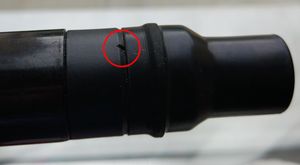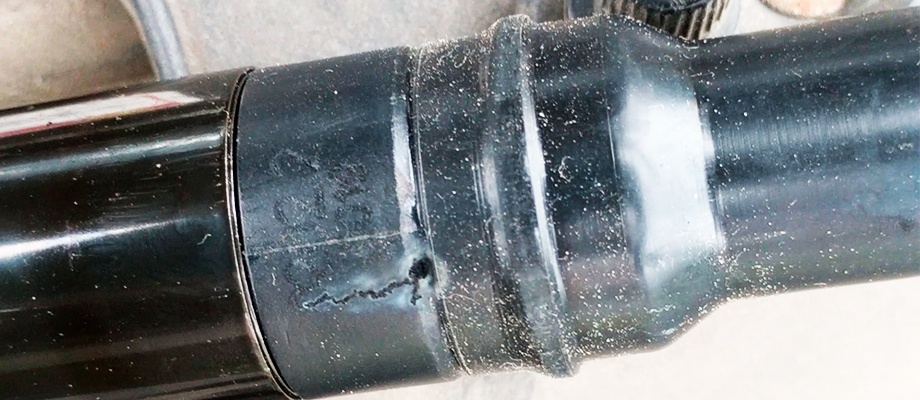
How to understand that the ignition coil is out of order?
Without an ignition system, not a single internal combustion engine will function. In principle, old diesel engines could function without electricity at all, but those days are almost gone. Today, every internal combustion engine, one way or another, is equipped with this system, and its heart is the ignition coil. Being a simple enough device, the coil, however, can create serious trouble for the car owner.
Causes of failure of the ignition coil
While ignition coils are built to last, the increasing demands on them mean they can fail. Among the main reasons for their breakdown are the following.

Damaged spark plugs or their wires. A faulty spark plug with high resistance causes the output voltage to rise. If it exceeds 35 volts, a coil insulation breakdown may occur, which will cause a short circuit. This can cause a decrease in output voltage, misfiring under load and / or poor starting of the internal combustion engine.
Worn spark plug or increased gap. As the spark plug wears, the gap between the two electrodes set on it will also increase. This means that the coil will need to generate a higher voltage to create a spark. An increased load on the coil can cause overload and overheating.
vibration defect. Constant wear due to vibration of the internal combustion engine can cause defects in the windings and insulation of the ignition coil, resulting in a short circuit or open circuit in the secondary winding. It can also loosen the electrical connector connected to the spark plug, causing the ignition coil to do extra work to create a spark.
Overheating. Due to their location, the coils are often exposed to the high temperatures that occur during the operation of the internal combustion engine. This can reduce the ability of the coils to conduct current, which in turn will reduce their performance and durability.
Changing resistance. A short circuit or low resistance in the winding of the coil will increase the amount of electricity flowing through it. This can damage the entire ignition system of the car. A change in resistance can also cause a weak spark to be generated, resulting in the vehicle not being able to start and damaging both the coil and nearby components.
Liquid ingress. In most cases, the source of fluid is oil leaking through a damaged valve cover gasket. This oil accumulates and damages both the coil and the spark plug. Water from the air conditioning system, for example, can also enter the ignition system. In both cases, in order to avoid repeated similar breakdowns, it is important to eliminate the root cause of the breakdown.
How to understand that the ignition coil is dying?
The breakdowns listed below can be caused by other reasons, so diagnostics should still be carried out comprehensively, including by checking the condition of the ignition coils.
So, breakdown symptoms can be divided into two types - behavioral and visual. Behavioral includes:
- The check engine light is on.
- Increased fuel consumption.
- Shot in the exhaust system. Occurs when fuel that is not burned in the combustion chamber enters the exhaust system.
- ICE stop. A faulty ignition coil will supply current to the spark plugs intermittently, which can cause the engine to stop.
- Misfires. Lack of power from one or more cylinders can cause engine misfiring, especially during acceleration.
- Problems with starting the engine. If one or a set of candles is not supplied with sufficient charge, the internal combustion engine will be very difficult to start. Cars with one coil may not start at all in this case.
- The internal combustion engine starts to "troit". And over time, the situation is getting worse, that is, “trimming” is expressed more and more clearly, the power and dynamics of the internal combustion engine are lost. "Tripling" often occurs in rainy (wet) weather and when starting the internal combustion engine "to cold".
- When trying to accelerate quickly, a “failure” occurs, and when idling, the engine speed does not increase sharply in the same way. There is also power loss under load.
- In some cases (on older cars) the smell of unburnt gasoline may be present in the cabin. On newer cars, a similar situation can occur when, instead of more or less clean exhaust gases, the smell of unburned gasoline is added to them.

In addition to all of the above, signs of coil failure can be seen and upon visual inspection:
- The presence of "breakdown tracks" on the coil body. That is, the characteristic dark stripes along which electricity “flashes”. In some, especially "neglected" cases, scales occur on the tracks.
- Change (cloudiness, blackening) of the color of the dielectric on the housing of the ignition coil.
- Darkening of electrical contacts and connectors due to burning.
- Traces of overheating on the coil body. Usually they are expressed in some "streaks" or a change in the geometry of the case in some places. In "severe" cases, they may have a burnt smell.
- High contamination on the coil body. Especially near electrical contacts. The fact is that electrical breakdown can occur precisely on the surface of dust or dirt. Therefore, this state of affairs should not be allowed to occur.
The main sign of a coil failure is the lack of ignition of the fuel mixture. However, this situation does not always occur, since in certain cases part of the electrical energy still goes to the candle, and not just to the body. In this case, you need to conduct additional diagnostics.
The signs of breakdown described above are relevant if individual ignition coils are installed in the engine. If the design provides for the installation of one coil common to all cylinders, then the internal combustion engine will stall completely (this, in fact, is one of the reasons why a set of individual modules is installed on modern machines).
